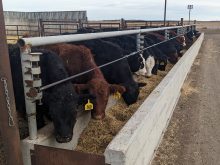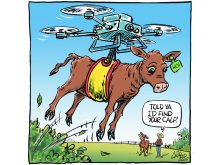Let us pause for a moment and pay homage to all the delectable foodstuffs that started life in a petri dish.
1.
2.
3.
Does it seem possible to ever populate this list? We ask the question because, on page 14 of this issue, you will find a story about progress in the development of in vitro meat.
The material could be available in grocery stores within a decade, according to one of the developers. That might come as an economic relief, if not a victory, for People for the Ethical Treatment of Animals.
Read Also

Churchill an attractive option, but more must be done
If a longer shipping season was demonstrated, alongside a reliable rail line, private investments would help the Port of Churchill become a critical infrastructure for Prairie shippers.
In April 2008, the animal activist group offered a $1 million reward to the first scientist who produced in vitro chicken meat and made it commercially available by 2012. A number of provisos were attached, among them a rule that the material had to have “a taste and texture indistinguishable from real chicken flesh to non-meat-eaters and meat-eaters alike.”
Looks like PETA won’t have to pay out. Besides the longer anticipated timeline for wide distribution of chicken meat or any other kind, the texture of this new product is apparently a problem.
Just how much of a problem, we don’t know. Is it similar to meat in the same way that tofu is similar to beef jerky? Similar in the way that pollock is similar to crab? Similar to the way fruit roll-ups are similar to apples and cherries?
There are oh, so many other questions.
Will in vitro meat behave well on the barbecue? Will butcher shops become laboratories? Will “rubber chicken dinners” become literally true? Ditto the monicker “mystery meat”?
Will the United States insist on country-of-origin petri dishes? Will the international meat trade demand traceability of cells?
Will vegetarians become comfortable eating this new meat? If so, will they stop acting so smug?
OK, let’s not get carried away. The serious folks who are developing the in vitro meat point to advantages of food safety, nutrition and economic efficiency.
They suggest it will result in less waste, lower greenhouse gas production and reduced use of land and water now employed in food animal production.
Research will continue and we shall see what it brings.
In the longer term, however, can we picture a world without domestic food animals and all the activity, diversity, employment, economy, marketing and gastronomy that they generate? Frankly, we’d rather not.














